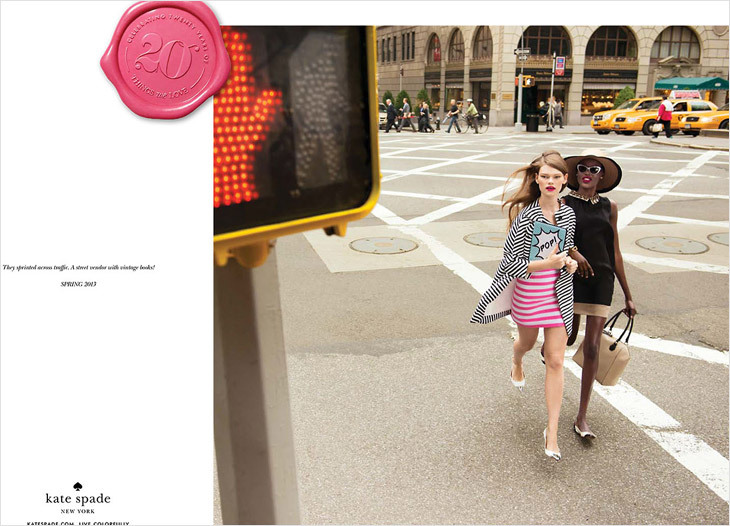I remember the first time I walked into a Kate Spade store in Pacific Place Mall in Hong Kong 6 years ago. It was packed and I gleefully stepped out with my very own tote bag. Kate Spade was preppy but glamorous, playful but chic and it’s a brand message thats booming. Sales growth has risen dramatically in the last five years from $91 million to $462 million, using a model that include wholesale, outlet stores and their company owned and partner owned stores worldwide of which there are over 200.

Set up 20 years ago by Kate Spade her husband Andy and partners Pamela Bell and Elyce Arona the brand sold to Neiman Marcus in 1999. In 2006 Liz Claiborne Inc. (now called Fifth & Pacific Inc.) bought the company. In 2007, the founders cashed out, and a new management was installed. Craig Leavitt, CEO, and Deborah Lloyd as president and creative director took the helm in 2008. Read more @FORBES
Currently 20% of sales come from e-commerce, and the digital integration is pretty seamless ( next day delivery after 9pm anyone?!) In another effort to reach the millennium customer a third division is being created – Kate Spade Saturday. Like Lanvin Blue, the label is available from its Tokyo store only and will be available exclusively online in the US. Their desire to put digital first transfers across all areas of the brand- using an Animated Gif is just one example..WATCH HERE
#WHENIGETPAID #IMBUYING #KATESPADE
Prancing around at the Polo in the Pink Franny Coat and battling the Somerset House Cobbles in the Selina stripe dress (with Fairytales & Hidden Notes Jewellery!) how cute are these Totes from their Starwood Partnership $198 ( also available in London Stores- Covent Garden & Sloane Square)
The company bases its global strategy on five pillars:
1. Brand consistency – brand comes first ensuring long term growth
2. Growth in existing markets – growth will come by increasing market share through additional door rollouts, comp sales, and launching new categories like watches
3. Product – prioritizing initiatives including Asian fashion fit and creating special products to celebrate holidays like Chinese New Yearundefined
4. Business development – pursuing new regions like India, Russia and Mexico where Kate Spade New York does not yet have a presence as well as select new Asian and Latin American territories.
5. Business model by region – a variety of business models are used including wholly-owned subsidiaries, distribution agreements, joint ventures, and wholesaling. Model is chosen to maximize profits and brand growth





